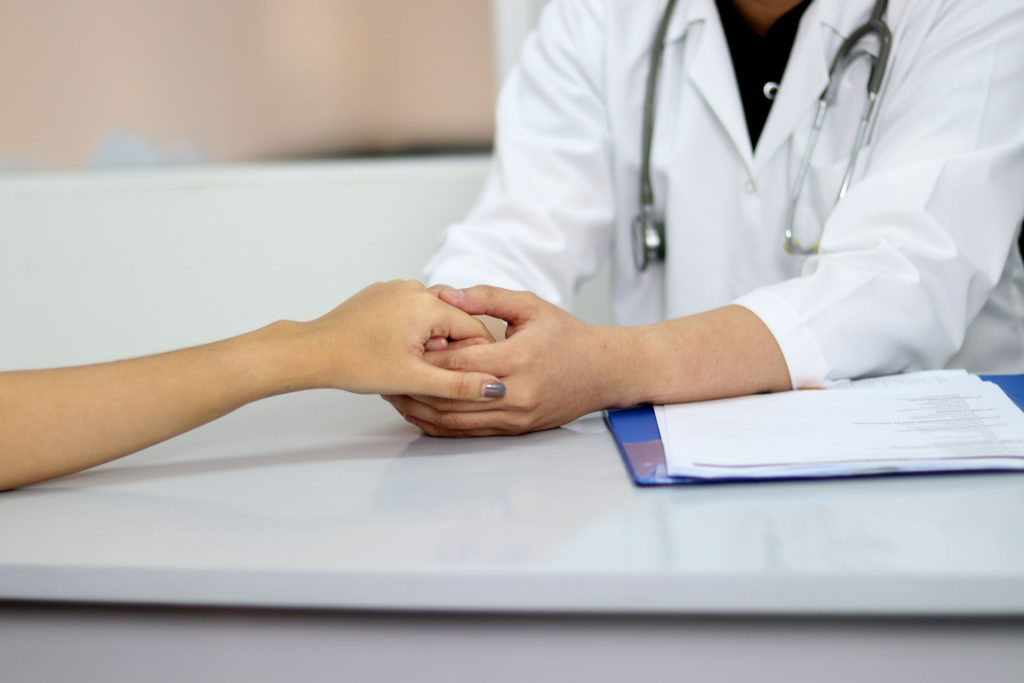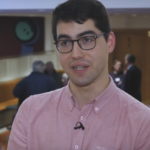
Police surgeons
Around the same time scientists in France were formally identifying the human immunodeficiency virus (HIV) in 1983, three sociologists were busy surveying police surgeons about their approach to cases of rape. One of the results of the survey provides an insight into police surgeons’ attitudes on sexual health. ‘When asked to elaborate on their duties’, wrote the historian Joanna Bourke, summarising the sociologists’ findings, ‘only 45 per cent of those surveyed… said that they should provide services for women who feared they were pregnant and only 36 per cent prescribed medicine against sexually transmitted diseases’. As HIV and AIDS were becoming increasingly visible as cases rose in the UK, very few police surgeons appear to have seen sexual health as an important aspect of their forensic medical practice.
The growing HIV epidemic forced sexual health more squarely onto police surgeons’ agendas. AIDS received its first detailed consideration in the pages of The Police Surgeon (the profession’s journal) in November 1985 when it reviewed Derek Llewellyn-Jones’ book Herpes, AIDS and Other Sexually Transmitted Diseases. The reviewer began by noting a growing sense of ‘perturbation’ amongst those working within the police service that their work may bring them into contact with AIDS. Anxieties about AIDS did not emerge onto blank slate; those working within the police service had been increasingly concerned about the dangers of contracting hepatitis, but by the mid-1980s, AIDS was beginning eclipse other medical fears as it became increasingly obvious as a public health crisis.
The reviewer hoped that more knowledge and understanding of the virus, as new books such as Llewellyn-Jones’ represented, would serve to alleviate professionals’ ‘capacity to induce terror and panic’. However, the book seemed to do little to reduce the reviewer’s apparent conviction that HIV was more likely to be found among a criminal underclass in Britain. His ‘police colleagues and their clients’ including police surgeons were, he suggested, ‘involved so often with those most prone to harbour, nay to propagate, such serious ailments with their grave outlook’. Quite what these ‘grave outlooks were, and who the people who harboured and propagated them, is unclear. Such an attitude does, however, fit within mental frameworks which saw people living with HIV and AIDS as morally bankrupt. Such attitudes were certainly in evidence in the police force at the time. The Chief Constable of Greater Manchester Police, James Anderton, suggested in 1986 that drug users, sex workers and gay men with HIV were ‘swirling around in a cesspit of their own making’.
Genitourinary medicine
This assumption that a criminal underclass was responsible for the spread of HIV delayed serious consideration of how victims of sexual assault should be screened for the virus. As a result, clinicians initially had to consider their options on a case-by-case basis. One of the earliest reported cases came in 1987, when ‘a 24 year old woman was examined and tested for HIV’ in St Mary’s Hospital, London ‘because she had been raped two weeks previously’. A test for HIV had not been developed until 1984, since when British and American medical literature had discussed the benefits, means and appropriateness of screening rape survivors for HIV. For the genitourinary consultants at St Mary’s there was a clear way forward: ‘all adult victims of rape should be offered a test for HIV, reassured that the risk of infection is low, and offered counselling’.
For police surgeons and other medics whose work placed them within the purview of the criminal justice system, other more ambiguous issues were at play. Not only did they need to find out whether their patients were HIV positive, they were tasked with determining whether their positive patients had seroconverted as a result of their sexually violent encounter. In short, it wasn’t just whether their patient who had been raped had HIV, but also whether their patient had HIV because they had been raped.
Writing in the British Medical Journal, the consultants at St Mary’s who had examined the 24-year-old rape survivor offered their experience as an instructive example. When the woman initially visited the clinic in May 1987, she was tested for gonorrhoea, chlamydia and HIV. The results for all of these tests were negative but, as her rapist has ‘told her that he was positive for HIV antibody’, the clinicians tested her for HIV three months later (this being the duration it can take from initial exposure to HIV being apparent in a test). After three months, doctors informed the woman that she had tested positive for HIV. Taken together, those results revealed that she had contracted HIV as a result of her rape.
This link was key. Three other women had previously attended St Mary’s having survived acts of rape and were found to be HIV positive. Unlike with the woman who formed the basis of the St Mary’s article, these women had not had samples taken from them and stored following their initial visit to the clinic. As a result, clinicians (and by extension the criminal justice system) could not be certain that these women’s rapists were the cause of their seroconversion to HIV. As the consultants from St Mary’s put it ‘HIV infection could not be definitely attributed to the assault’.
A simple but important suggestion emerged from this paper: if rape survivors were willing to be tested for HIV, then those tests should be taken as quickly as possible, despite the knowledge that HIV was unlikely to be visible in tests until three months after initial exposure. Those tests, and samples taken at that time, could be crucial evidence in proving whether a person’s rapist had also transmitted HIV to their victim. Not only would this help rape survivors understand what had happened to them and allow clinicians to refer their patients for counselling, such practice was also potentially useful as a means of proving causality (the rape led to HIV) in criminal justice settings.
Conclusion
HIV presented new challenges to forensic medics in Britain. Not only was the threat of the virus a new and powerful weapon for perpetrators, it was also a added anxiety for patients and medics alike. Police surgeons were initially hands-off when it came to sexual health, and though this would change, it left genitourinary medical consultants such as those working with rape survivors in St Mary’s Hospital to suggest new approaches to testing their patients. With medical and criminal justice concerns both having to be addressed, testing on first contact and three months later became a useful ‘first step’.
These developments not only provide historical case studies of survivors grappling with both their experience of sexual violence and an HIV diagnosis. They also remind us that, in the mid-1980s, HIV policies – including those of vital services like emergency medicine and criminal justice – were being made by medics in lieu of guidance from the state. Conventional histories of HIV rightly see gay men and IV drug users as victims of early government inaction on the virus. With medics left to suggest policies case-by-case, survivors of sexual violence should also fall into this category of the overlooked and undervalued in this period. With medical services stretched and reform of the Health and Social Care Act needed to allow for better, more holistic care of survivors, this history is an important reminder that more serious thinking about sexual violence is needed by those who dictate sexual health policy in Britain.
 Dr George Severs is a Postdoctoral Research Fellow on the SHaME project at Birkbeck, University of London. His research examines medical responses to survivors of sexual violence during the HIV/AIDS epidemic in late twentieth-century Britain, and the history of male survivors of sexual violence. His first book (under contract with Bloomsbury Academic) is a history of HIV/AIDS activism in England.
Dr George Severs is a Postdoctoral Research Fellow on the SHaME project at Birkbeck, University of London. His research examines medical responses to survivors of sexual violence during the HIV/AIDS epidemic in late twentieth-century Britain, and the history of male survivors of sexual violence. His first book (under contract with Bloomsbury Academic) is a history of HIV/AIDS activism in England.